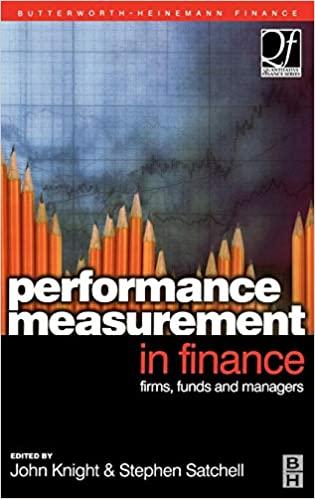Question
This is the easiest problem because you have to pretty much replicate what we did on some slides in our Chapter 12 PowerPoint! This may
This is the easiest problem because you have to pretty much replicate what we did on some slides in our Chapter 12 PowerPoint! This may be a difficult problem because some sub-questions are connected: if you make a mistake in the first part, it may make some of your other answers incorrect as well. So, be careful! Check your math!
So, here's what I want you to do:
Re-do the problem in Chapter 12 PowerPoint slides 6~ and 46~, EXCEPT:
- the purchase price and the NOI for the first year should be both triple what's on slide 6 (in other words, $3,000,000 and $300,000, respectively),
- AND the "conversion percentage", but INSTEAD 72% / 0% / 100% (see last table on the bottom of this page),
- AND the loan term should be 30 years (like on slide 46), the annual loan interest rate should be 8.5% (like on slide 46), the loan should require monthly payments (like on the slides), and the LTV on the loan should still be 70 percent of your new purchase price.
If you can, do the math in Excel with correct referencing to cells with intermediate results. This will allow you to avoid rounding errors. Otherwise, increase decimal places - the more the better! Say, 6 or even higher.
(a) First, calculate the required annual loan payment: $ . Do not use the "$" sign. Round to whole dollar.
(b) Next, for the conventional fixed-rate loan case, calculate the investor's BTCFs for years 0 through 5. Also, use these annual cash flows to calculate the investor's BTIRR. In addition, calculate the lender's IRR using lender's monthly cash flows (like we did in class). Round the BTCFs to whole dollar and the two IRRs to 2 decimal places. Do not use the "$" or the "%" signs. Put negative signs where it's a cash outflow.
| Year 0 | Year 1 | Year 2 | Year 3 | Year 4 | Year 5 | |
|---|---|---|---|---|---|---|
| Investor's BTCF | $ | $ | $ | $ | $ | $ |
| Investor's BTIRR | % | |||||
| Lender's IRR | % |
(c) Next, for the convertible loan case, calculate the investor's BTIRR based on the investor's annual cash flows. Also, calculate the lender's IRR based on the lender's monthly cash flows (just like we did on the slides). Calculate both for the case when the investor uses the convertible loan with a different conversion percentage in each case, as shown in the table below. Put your answers in percent, not in decimals. Round all to 2 decimal places, and do not use the "%" signs. Put negative signs if any of your answers are negative.
| If the "conversion percentage" equals... | ...72% | ...0% | ...100% |
|---|---|---|---|
| Investor's BTIRR | % | % | % |
| Lender's IRR | % | % | % |
(d) Lender's annual return on invested funds in higher when the conversion percentage is . Type "higher" or "lower".
In addition, investor's annual return on lent funds in higher when the conversion percentage is . Type "higher" or "lower".
Step by Step Solution
There are 3 Steps involved in it
Step: 1

Get Instant Access to Expert-Tailored Solutions
See step-by-step solutions with expert insights and AI powered tools for academic success
Step: 2

Step: 3

Ace Your Homework with AI
Get the answers you need in no time with our AI-driven, step-by-step assistance
Get Started


